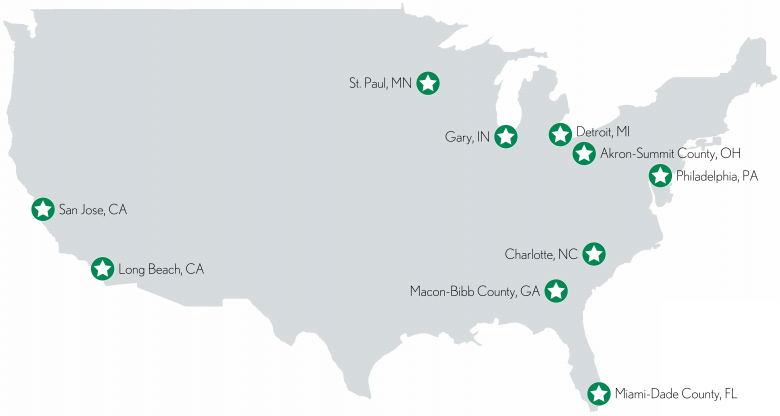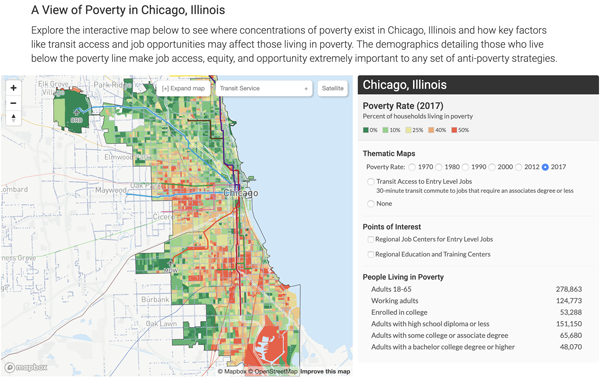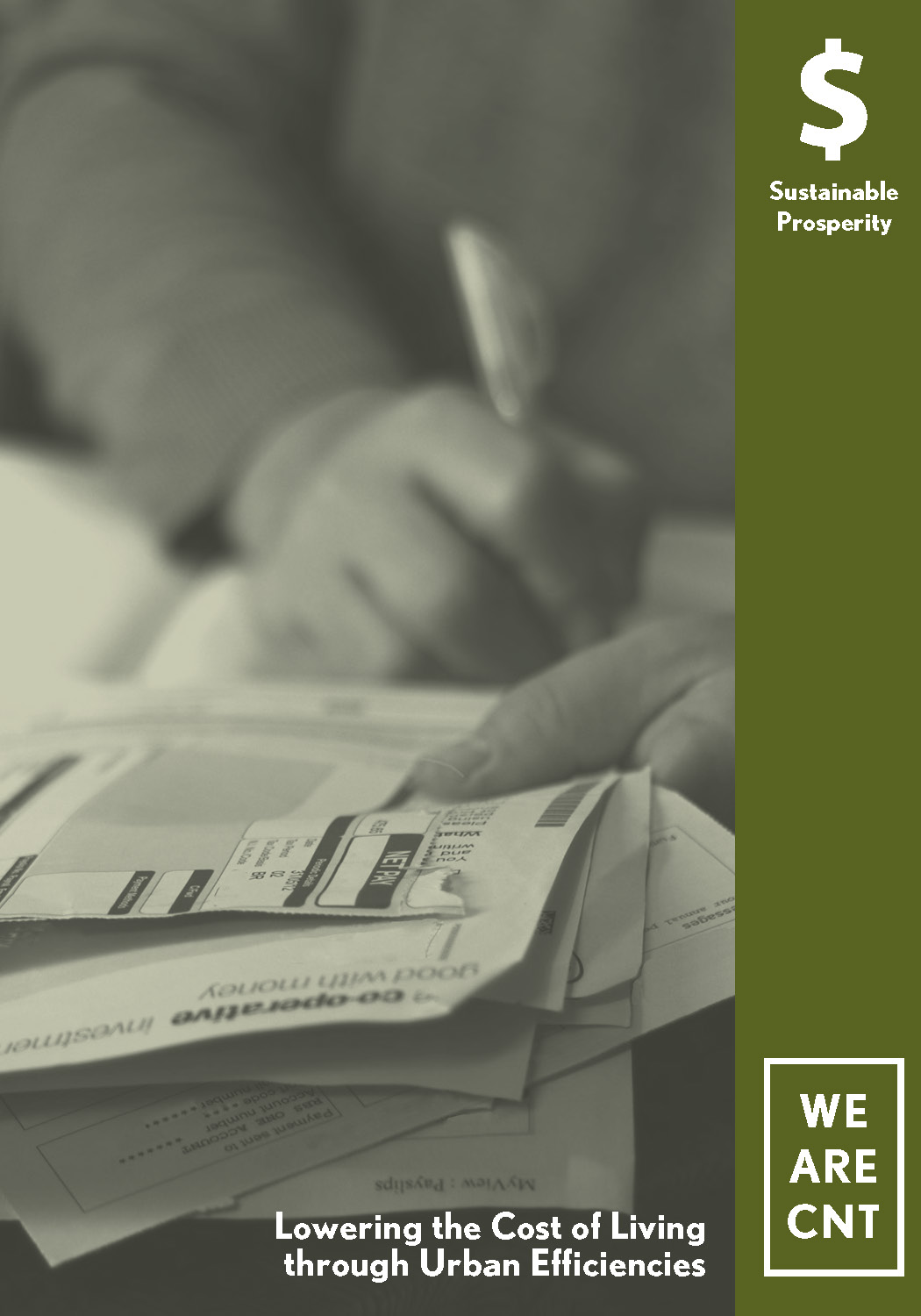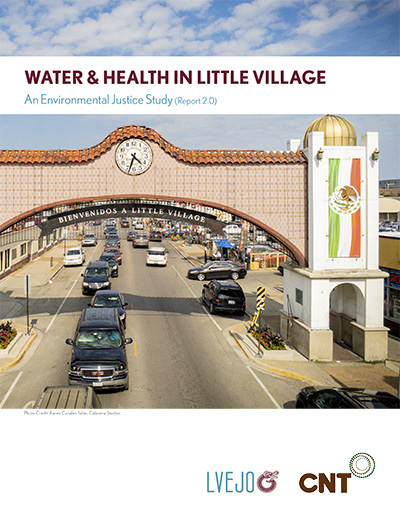Urban Opportunity Agenda Website Launched
The Urban Opportunity Agenda website provides profiles of more than 100 U.S. cities with the largest populations of individuals living below the poverty threshold across all 50 states. It allows users to set a poverty reduction goal and quantify the scale of impact of a portfolio of sustainability strategies in their communities... more
The Center for Neighborhood Technology (CNT), with support from Knight Foundation, has analyzed 10 U.S. communities and found that the number of people living in poverty could be reduced by 25 percent or more through a set of expense reductions, targeted job creation, and smarter public and private investments. The need to build on local assets means that the portfolio of opportunities is different across communities, but the framework is one that can be applied nationally.

CNT has quantified the potential impact of a portfolio of strategies, which, taken together, could reduce poverty by 25% in each of the 10 places studied for this project.
Below, as another example, is the set of possible strategies for Philadelphia, PA to fill an annual $476 million poverty gap through reduced household expenses and increased incomes.
Poverty reduction itself has the potential to be an economic engine. Instead of high poverty rates and rising household costs being a drag on the local economy, efficiencies and targeted investment can boost economic growth.
Poverty reduction is key to economic prosperity
There were nine million more Americans living below the poverty line in 2014 than in 2008.
A growing income gap and the presence of persistent poverty in our communities constrains economic opportunity for everyone. The economic gains of the past several years have not reduced poverty. Even as unemployment and the Gross Domestic Product recover from the economic downturn, the poverty rate is on the rise, and the cost of living is growing faster than incomes.
The Urban Opportunity Agenda maximizes economic opportunity by helping cities effectively reduce poverty and provide benefits to all residents and businesses.
Traditional approaches to combat poverty have increased incomes with public benefits and created employment opportunities. These methods are critically important, and research has shown that such programs have successfully helped millions of families. But there’s more that needs to be done. By making targeted investments that help families spend less on the basics, civic leaders can reduce poverty while providing benefits to the entire community.
The burden of the poverty crisis has fallen on local communities. The poverty rate increased over the period from 1970 to 2014 in all 10 places analyzed for this project.
Poverty is a two-sided equation
It isn’t just what you earn, it is also what you spend—and low-income families are often hit with high costs.
The Urban Opportunity Agenda, unlike traditional anti-poverty programs, treats both sides of the coin, with job creation and household savings that together can help families achieve long-term financial success. A dollar saved is a dollar earned, and with expenses rising faster than incomes, we must work to help households cut costs.
Smarter investments deliver city-wide benefits for all
Too much money is spent on unsustainable infrastructure, limiting our ability to expand economic opportunity. Civic leaders should instead allocate resources to initiatives that reduce waste, lower expenses for families, create connected communities, and address the risks of a changing climate by:
• Reducing spending on transportation by all households
• Cutting energy and water costs for all households
• Improving access for all to basic services, such as groceries, childcare, doctors, and other regular destinations
These investments are doubly effective because they lift low-income residents out of poverty and they benefit people and businesses across the community.
To be effective, civic leaders need to set measurable goals, track their investments, and make adjustments as they go.
A city cannot just give every resident more money, but it can help them cut down on bills and save. In the areas of energy, water, transportation, telecom, and even food it is possible to save money each month by reducing waste and making efficient decisions. Education programs in Chicago have reduced expenses by $125/month, the equivalent of a $0.72/hour raise. These are programs that can benefit households of every income level.
In addition to individual actions, systemic efficiencies, such as smarter land-use planning, can reduce costs communitywide. A 20 percent decrease in auto travel could save a low-income household $500 to $900 per year in the 10 communities analyzed.
Ways to start
Communities can start implementing the Urban Opportunity Agenda today. With the following steps, local governments and institutions can build on work already underway and free up resources to address poverty.
• Think differently: Expense reduction and income growth can reduce poverty and be a regional economic engine
• Establish a goal: Engage diverse groups in setting a poverty reduction goal
• Go after quick wins: Look for low-hanging fruit to build momentum toward poverty reduction goals
• Measure progress: Track and share the poverty reduction impact of your actions as well as the benefits for all residents and businesses
Local governments and institutions cannot tackle poverty alone. State and federal changes to realign investments and create enabling policies are essential. For example, in 2015, New Orleans passed a “Hire NOLA” law, which requires 50 percent local hiring for public contracts, 30 percent of which must be from a disadvantaged population by 2020. Federal policy prohibits the application of such ordinances to federal funds, but in 2015 the U.S. Department of Transportation launched a pilot to enable local hiring requirements on select projects.
A coalition of local governments focused on innovative poverty reduction and economic growth strategies needs to call for such systemic changes to create the necessary conditions to lower poverty while reducing expenses and increasing opportunities for all.
To learn more, contact Jen McGraw, CNT's Director of Sustainability Innovation.
Download the Presentations
- Urban Opportunity Agenda National Summary (PDF)
- Urban Opportunity Briefing - National (PDF)
- Urban Opportunity Briefing - Akron-Summit (PDF)
- Urban Opportunity Briefing - Charlotte (PDF)
- Urban Opportunity Briefing - Detroit (PDF)
- Urban Opportunity Briefing - Gary (PDF)
- Urban Opportunity Briefing - Long Beach (PDF)
- Urban Opportunity Briefing - Macon-Bibb (PDF)
- Urban Opportunity Briefing - Miami-Dade (PDF)
- Urban Opportunity Briefing - Philadelphia (PDF)
- Urban Opportunity Briefing - San Jose (PDF)
- Urban Opportunity Briefing - St Paul (PDF)





 Strengthening Transit Through Community Partnerships
Strengthening Transit Through Community Partnerships





